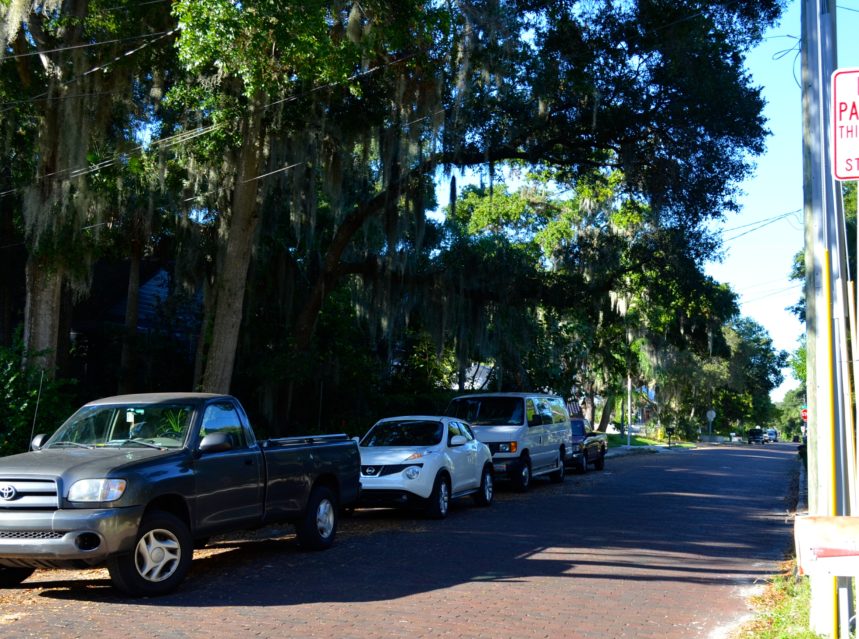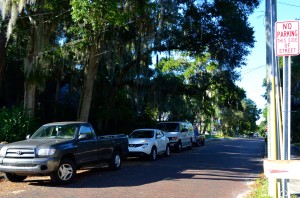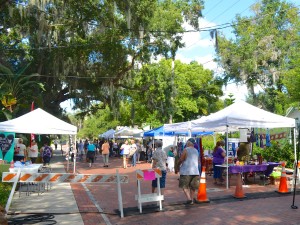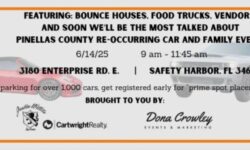Obscure Parking Ordinance Rankles Safety Harbor Residents


A longstanding ordinance that prohibits people from parking on Safety Harbor streets for more than 48 hours at a time has some residents of the city up in arms.
Section 23-10 of the city’s municipal code has been in effect for many years; according to officials, the parking code was first written in 1970, and that section, though not necessarily the 48-hour rule, was last updated in 2006.
Despite the fact that the restriction has been in effect for many years, frustration over the little known ordinance recently came to light after a complaint was filed with the city.
“There was a complaint by a property owner on the block that there’s three cars parked there,” City Manager Matt Spoor explained at the October 20 City Commission meeting, referring to the area along Fourth Avenue North.
“The rule does state that no vehicle can be parked there for more than 48 hours. That’s the rule.”
That dispute and other issues with the ordinance spurred a couple of downtown residents to speak out about the matter.
“I’ve spoken to more than 50 people, and nobody knows about this ordinance,” Fourth Avenue North resident Sarah Ladelfa said during the Audience to Be Heard portion of the meeting. “You can’t even park in front of your own house.”

“We need to be enforcing our parking rules and making accommodations for the residents, because if you don’t, things are going to start getting ugly very quickly,” she added. “They already have, at least in my neighborhood.”
After Ladelfa spoke, longtime resident Fritz Kirsch stepped up to the podium and expressed his frustrations with the ordinance.
“I’ve lived her for 40 years…and I recently found out that I have to move my cars every 48 hours in order to accommodate this rule,” he told the commission, noting he was recently “turned in” for disobeying the ordinance.
“I came here as a young man, age 31. I’m 71 now. I want to continue to live here in Safety Harbor, but if I can’t park my cars in front of my own house, I can’t stay.”
Kirsch suggested the city come up with a solution, such as implementing variances or special permits for certain residents, and afterwards, officials explored the options available to them.
“I’d like to know how many people are affected by having to park on the street and potentially move their vehicles every 48 hours,” Mayor Andy Steingold said, adding that he didn’t believe more than 100 property owners would be affected by the rule.
“If it’s a pretty significant problem, I suggest we address it,” he added. “Perhaps we give out permits to individuals versus just doing away with the 48-hour parking. That may be one way we can address the issue.”

Mayor Steingold, Vice Mayor Cliff Merz and Commissioner Andy Zodrow all said they would like city staff to look into it, and Merz questioned why the rule was ever put into the code in the first place.
“Please look into why this was implemented, why the 48-hour requirement,” he requested.
Spoor informed the commission that he would research the matter and report his findings, and Kirsch added one final comment that put the entire issue into perspective.
“I’ve already been intimidated by being told that within the next 10 days or so, the sheriffs will be coming around and ticketing my cars,” he said. “I’m a poor schoolteacher. I can’t afford that.”
“I don’t want the cops coming and hauling me off. It would look kind of strange, me in jail and somebody says, ‘What are you in for?’ Parking my car in front of my house.”





Here are the State of Florida parking laws as displayed in the Florida Driver Handbook http://www.123driving.com/flhandbook/flhb-parking.shtml
Parking
When parking on a public road, move as far away from traffic as possible. If there is a roadside shoulder, pull as far onto it as you can. If there is a curb, pull close to it – you must not park more than one foot away.
Always park on the right side of the roadway, unless it is a one-way street. Make sure your vehicle cannot move. Set the parking brake and shift to park with an automatic transmission or reverse with a manual transmission. Turn off the engine and lock the vehicle. Florida law requires that you take the keys out of your vehicle before leaving it. Always check traffic behind you before getting out, or get out on the curb side.
Before you leave any parked position, look over your shoulder to the rear to make sure the way is clear. Give the proper turn signal if driving from a curb and yield to other traffic.
Parking on Hills
When parking on hills:
Turn your wheels so that if your car starts to move by itself it will roll away from traffic or into the curb. Study the diagram provided.
Set the parking brake.
Place automatic gear shift in park. Shift manual gears to reverse (downhill) or first (uphill).
parking on hills
Straight-in Parking
The rear markers represent the REAR corners of the parking space. The forward markers represent the approximate CENTER of the parking space. When properly parked, the vehicle should be centered inside the space with no part of the vehicle extending out into the traffic lane.
straight in parking
Where Parking is not Allowed
no parking sign
On the roadway side of another parked vehicle (double parking).
On crosswalks.
On sidewalks.
In front of driveways.
By curbs painted yellow or where “No Parking” signs are posted.
Within intersections.
Within 15 feet of a fire hydrant.
Within 20 feet of an intersection.
Within 20 feet of the entrance to a fire, ambulance or rescue squad station.
Within 50 feet of a railroad crossing.
On the hard surface of a highway where parking spaces are not marked.
On any bridge or overpass or in any tunnel.
Within 30 feet of a rural mail box on a state highway between 8 a.m. and 6 p.m.
Within 30 feet of any flashing signal, stop sign or traffic signal.
In such a way that you block or create a hazard for other vehicles.
I observed 6 violations on a walk of 1.25 miles with my dogs this morning. I guess you could say lack of enforcement rankles this resident.
Thanks for the info, Stephen. And yes, some residents are also upset with the enforcement aspect of the ordinance.
There are many home in the downtown that don’t have driveways or a garage. Downtown residents should have a parking pass. We had those on Pass-a-Grille Beach and it worked fine!
It would be good for the city to begin to enforce parking rules on all the public streets in the city.
I enjoy walking with my dogs safely and often have to walk around cars parked on the sidewalks every day. Not only are cars parked on the sidewalks but people also seem to think the sidewalk is the place to put their dead shrubs, their garbage cans and their recycle cans too!
To make matters worse the city puts the empty cans back on the sidewalks too!
We also have the problem of people parking their cars within 15 feet of an intersection.
Nobody in the city nor in the sheriff ‘s office seems interested in keeping sidewalks clear and intersections safe.
So if you are upset over the 48 hour rule, don’t worry, the city will find something else to talk about next week and forget about enforcing the 48 hour rule.
Go to any meeting and you will hear city officials saying there is no money for enforcement.
Perhaps we should change the city name to Koch City or Tea Party City.
We get what we vote for!
I suspect that the ordinance was put in place before families were expected to have more than one car. A corollary: the streets probably weren’t built wide enough to accommodate those extra cars, either.
Right. That’s exactly what I was going to say. In 1970, having 3 and 4 cars to a household really wasn’t an issue. Changing times call for adjustments in outdated ordinances. Granted, that doesn’t make the street any bigger, but residents need to park their cars, right?